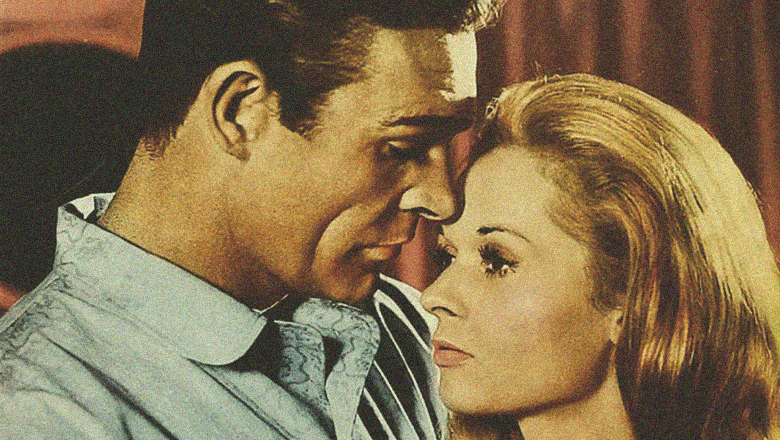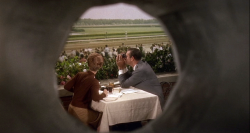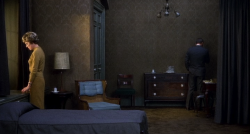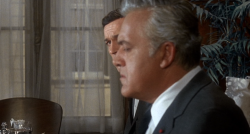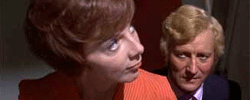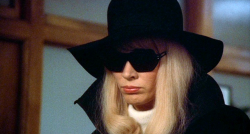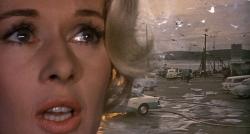Credits
Feature by: Rumsey Taylor, Leo Goldsmith, Ian Johnston, and Jenny Jediny
Posted on: 11 December 2011
As we’ve noted in the past, the late films of cinematic masters often occupy an awkward place in their respective directors’ oeuvres. In many ways, such works sometimes offer fascinating distillations of their maker’s themes and stylistic concerns in precise formal shorthand. But they’re also prone to indulgence, marked by a self-referentiality that rigidly reproduces stylistic obsessions or allows for self-parody. The last films of any filmmaker, then, might be the most interesting grounds to test auteurist notions of cinema as a personal artistic pursuit, or they complicate such theories still further, yielding merely obvious observations about artists in their most self-conscious and legacy-centric period. Rarely do such films cap an auteur’s career in a neat or simple way: one filmmaker’s masterful swan song might be another’s senior moment.
In the case of Alfred Hitchcock, an exploration of late-career films is particularly fascinating, not least because of the director’s singular control of the medium and of his own public image. In the years following Psycho, Hitchcock’s profile as a celebrity rivaled that of any of his stars, and his artistry was finally beginning to be appreciated not only by the devotees at Cahiers du cinéma, but by critics and audiences at home, as well. His late work might have found the director simply resting on his laurels, enjoying the accolades and trotting out uninspired variations on old themes and plotlines. And while Hitchcock no doubt maintained his particular obsessions throughout this period, his elaborations on and deviations from these ideas yield a curious and occasionally baffling half-dozen films that, taken as a group, constitute one of the least understood (and certainly least lauded) phases of his career—second only to his equally fascinating silent period.
To be sure, nearly all of Hitchcock’s most consistent themes make appearances in this period, albeit in new clothes. The border between guilt and innocence is fuzzier than ever in this phase, as is the line that separates sex from violence. The formation of the couple, the overriding principle of Hitchcock’s work from the very start of his career, is especially embattled throughout Hitchcock’s later films, challenged in the most shocking fashion in Marnie’s marital rape scene, all but totally ignored in smothering political endgames of Topaz, and brutally cut short through violent sex-murder in Frenzy. Among these unsettling portraits of modern life and love, Hitchcock seems to be exploring with a renewed seriousness the themes of marriage and domesticity, as well as those of politics—both of gender and the Cold War. Torn Curtain, with its tale of an American nuclear physicist’s willful misrecognition as a commie, represents one of Hitchcock’s weirdest variations on the “wrong man/woman” theme, and Frenzy, with its morally equivocal protagonist, one of his nastiest.
One particular problem for Hitchcock in this period, it seems, was his uncertain command of Hollywood’s star system, an astrological code of which he was once a canny and crafty augur. After his skillfully subversive use (and sudden elimination) of Janet Leigh in Psycho, Hitchcock famously attempted to mould his very own Grace Kelly out of the raw material of ‘Tippi’ Hedren. But Hedren eventually tired of Hitchcock’s relentless attempts to control her and her career, and in subsequent films the director seems to have vacillated between the use of younger stars (Paul Newman and Julie Andrews in Torn Curtain, for example), or relative unknowns or foreign actors (as in the cast of Topaz, some of whom had been suggested by Truffaut). Such a shift in Hitchcock’s command of casting may also be attributable simply to the shifts underway throughout the Hollywood studio system. Some of his regular stars – like Cary Grant and Grace Kelly – were retiring from filmmaking entirely, and in their place, new kinds of stars arose, demanding different kinds of roles and stories. (Paul Newman’s method-acting proved alien to the director’s usual production model.) In any case, Hitchcock’s casting choices demonstrate a loosening of control in an otherwise extremely careful body of work that often results in problems of characterization (and audience identification) and storytelling.
But if Hitchcock’s use of actors occasionally proved problematic, his mastery of style remained strong. Occasionally even too much so: Hitchcock’s later films display a rigorous formalism, especially in color and design, that borders on mannerism. Trained as an art director and designer of intertitles early in his career, Hitchcock always displayed a meticulous attention to the graphic elements of his film, a flair most evident in his collaborations with Saul Bass. His 1960s films extend his carefully coded use of color with greater and greater precision, frequently contrasting colorless palettes (think of the drab gray suits and beige interiors of Torn Curtain and Topaz) with sharp injections of contrast (black and white in The Birds). The color red, already an important color in Hitchcock’s aesthetic, emotional, and figurative spectrum, attains particular prominence here, not only in Marnie’s violent pathological aversion, but also as warning signals throughout these films. But his 1970s films push this obsession with color contrasts even further and more dramatically, erupting in the carnivalesque hodge-podge of the Covent Garden produce markets and similarly floral fashions of Frenzy and the gawdy green-black-red color scheme of Family Plot.
Even at their least inspired dramatically, then, these films offer fascinatingly minute details of design that often seem positioned to tell a story of their own. But Hitchcock is anything but cavalier in the deployment of such details, which is one of the reasons why all of his films lend themselves to a process of interpretation and analysis that is as obsessive as the work of the director himself.
For the next week, we’ll be looking at each of the films Hitchcock made in his late career, and on Friday, December 16th, we’ll be presenting his 1964 masterpiece, Marnie, at 92Y Tribeca.
Introduction by Leo Goldsmith
By Rumsey Taylor, Leo Goldsmith, Ian Johnston, and Jenny Jediny ©2011 NotComing.com
Reviews
We don’t do comments anymore, but you may contact us here or find us on Twitter or Facebook.



